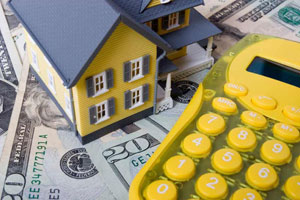What are the Different Types of APR?
By Sari R. Updated on 7/19/2017
Annual Percentage Rate a figure that represents the annual charge for borrowing, or the yearly cost of funds over the entire loan term. This figure includes any fees or additional costs associated with the transaction. The calculation helps to easily compare different mortgage, credit card, or other loans.
By looking at the APR, you can tell at a glance what program might be a better deal.
What is fixed APR?
A fixed APR is a rate that remains unchanged throughout the life of the loan. This type of APR is often used on mortgages and auto loans, such as a 30-year fixed-rate mortgage.
What is variable APR?
A variable APR changes over the life of the loan. In an adjustable-rate mortgage, there is an initial lower APR that often has the possibility of increasing during the life of the loan.
The manner and timing of rate adjustments are disclosed to you before completing the transaction. In the case of a credit card or other open-ended financing, the lender can often change the APR. Be careful of these changes, especially when borrowing large amounts. An APR that jumps from 5% to 20% can be difficult to manage.
What is nominal APR?
The nominal APR is the interest stated on your loan and is calculated as the rate for a payment period multiplied by the number of payment periods in a year.
It differs from the effective APR in that the costs involved with obtaining the financing are not considered.
What is effective APR?
The effective APR includes certain designated fees that are incurred to initiate financing. These fees may, or may not be added to the principal balance of your loan. Therefore, the effective APR on a mortgage or loan may often be higher than the nominal APR.
What is credit card APR?
Credit card APRs differ from those of other loans in that they have several different APRs for each type of balance. APRs vary widely between cash advances, purchases, and balance transfers. Be aware of each to avoid substantial interest fees.
What are some APR comparison caveats?
APR does not contain all upfront fees.
By law, certain fees must be included in the calculation, and some are not. Compare Good Faith Estimates (GFEs) or a detailed breakdown of all closing costs to compare
If one program contains only $1,000 in “non-APR” fees while another has only $500 in calculated APR fees, the higher cost loan will have a lower APR, but may not be the best loan for you.
Not all loans are taken to full term.
Since APR is a combination of interest rate and certain loan fees spread over the life of the loan, loan comparison must include an analysis of the expected actual duration of the loan as opposed to the entire contracted term.
Higher upfront fees will usually result in a lower APR. However, in the case of a borrower holding the financing for significantly less than a full term, this may not be the wisest choice. These additional costs must be compared to the payment savings
What is APY?
APR is often confused with APY, which stands for annual percentage yield. APY differs from APR in that APY is the annual rate of return, accounting for the effect of compounding interest. Essentially this is a return on invested money. Unlike APR, APY can be directly compared to establish the highest benefit. One possible exception to this could be if there are any penalties for early withdrawal of your principal.

Didn't find the answer you wanted? Ask one of your own.
-
 What is the Purpose of APR?
View More
What is the Purpose of APR?
View More

Contributing Authors
Related Articles
Ask our community a question.
Searching Today's Rates...

Featured Lenders
Cameron Burke
Vision One Mortgage
Huntington Beach, CA
Kat Whitman
Whitman Met, Inc.
Sacramento, CA
Lisa Stepp
RBS Citizens
Clifton Park, NY


